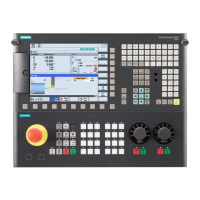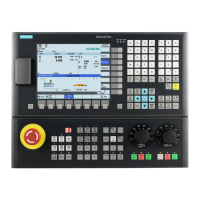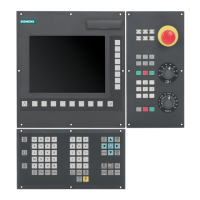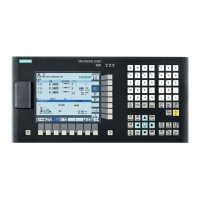K3: Compensations
4.4 Interpolatory compensation
Extended Functions
Function Manual, 03/2013, 6FC5397-1BP40-3BA1
243
4.4.3 Compensation of sag and angularity errors
4.4.3.1 Description of functions
Sag errors
Weight can result in position-dependent displacement and inclination of moved parts since it
can cause machine parts and their guides to sag.
Also large workpieces (e.g. cylinders) sag under their own weight.
Angularity errors
If moving axes are not positioned in exactly the required angle (e.g. perpendicular) with
respect to one another, increasingly serious positioning errors will occur as the deviation
from zero point becomes greater.
Compensation
In contrast to the MSEC, the base and compensation axes need not be identical for "Sag
compensation" or "Angularity error compensation", requiring an axis assignment in every
compensation table.
In order to compensate for sag of one axis (base axis) which results from its own weight, the
absolute position of another axis (compensation axis) must be influenced. "Sag
compensation" is therefore an inter-axis compensation.
As illustrated in the diagram below, the further the machining head moves in the negative Y1
axis direction, the more the cross-arm sags in the negative Z1 axis direction.
6DJLQQHJ<
GLUHFWLRQEHFDXVH
RILWVRZQZHLJKW
=
<
Figure 4-5 Example of sag caused by own weight

